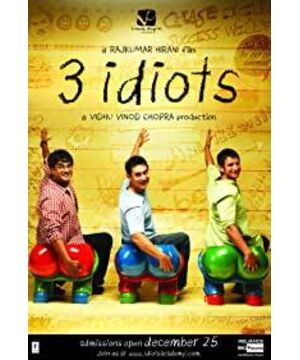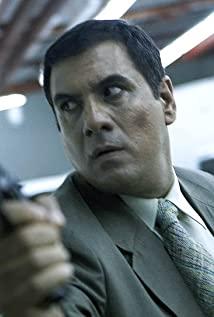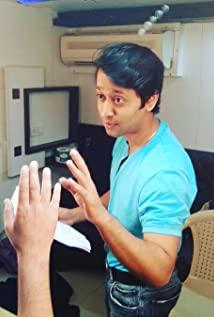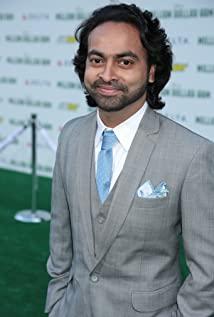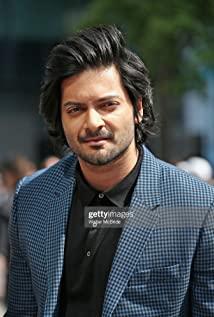script: the precision of "no waste"
The script of "Three Fools" can be called a textbook of parallel narrative. The whole film presents two narrative lines: one is reality and the other is memory. The narrative line of reality is used to ask questions and set suspense (such as why the "three fools" are friends, why is Rancho so important to the other two fools?), while the narrative line of memory is used for the audience layer by layer. Answering these questions opens up the suspense. The two narrative lines also exchange functions, and in the actual narrative line will also solve the questions within the narrative line of memory (such as who Rancho is, and what will happen to the final meeting between Rancho and "Silencer"? ) The overlapping, separation and complementation of the two narrative lines make the story of "Three Fools" rich and clear, and achieves the effect of making the story always affect people's hearts.
At the same time, the script of "Three Fools" is full of great attention to detail in the Western theatre tradition, as well as the ingenious conception of plot echoes, which is also what Hollywood has always been striving for in movie scripts.
In this film, foreshadowing and echoes appear in various forms such as props, lines and actions. For example, the protagonist's catchphrase "everything goes well" runs through the entire film, which not only expresses the character's character, but also promotes the development of the plot; at the climax of the plot, it even becomes the finishing touch to turn the tide.
Similar examples abound. For example, at the beginning of the school year, "Silencer" could not speak Hindi, which provided conditions for the jokes that later changed his speech; Making the final "silencer" echo the opening scene is very natural; finishing touches like this make anything that appears throughout the film find a function in the back, a pen, a gizmo, and a word all count.
Lou Breslow, the screenwriter of the film, brought the script to a "no-waste" level of precision. The space pen in the film is not only the beginning of the conflict between Rancho and Dean, but also a symbol of Dean's psychological changes and the true meaning of life; a remote-controlled helicopter invented by a student indirectly caused his suicide at the end, but at the end, a A more beautiful airplane model appeared in the sky of Rancho and the children; Rancho was in a hurry at Bi Ya's sister's wedding and said that he would invent a battery power supply device named after the dean, which was used in the rainy night in the second half of the film. The midwifery scene played a key role - the effective use of these props and the precise foreshadowing and echoes made "Three Fools" jump out of the rut of "commercial films without brains".
In addition, the film's response to the gap between the rich and the poor in India's real society did not make the story fall into the ugly abyss of "bitterness and hatred". The playful and humorous passages and ingenious dialogues of characters interspersed in the script made the "Three" "Fool" has a rare and relaxing atmosphere in the criticism and satire. Director: Inheritance and Transformation of Tradition Indian cinema has its own set of styles: large songs and dances (these songs and dances even appear in order to appear), lengthy and
confusing lengths, and unskilled flat film narratives method.
The director of "Three Fools" is Rajkumar Hirani, the Indian director who filmed "Munnabhai MBBS" (Munnabhai MBBS). His films are more distinctive than ordinary Indian films. personal characteristics. These features are also prominent in "Three Fools".
Such as the use of singing and dancing. Rakuma Hirani not only respects the Indian film tradition, but also integrates the song and dance into the plot. At the same time, he adds modern popular elements to the music and choreography, and the use of lenses and editing are also flexible and diverse, making the song and dance in this film pleasing to the eye and absolutely not. Superfluous, which set a revolutionary benchmark for Indian cinema.
The reason why "Three Fools" can be successful in the Chinese and world film circles is the critical spirit wrapped under the cloak of comedy. In the film, director Rakuma Hirani made a high-density attack on India's social class, education system, and the gap between young people's ideals and reality. What is rare is that this attack has no dry and stereotyped preaching or boring false sympathy, but is expressed in the state of the characters in the play and a tranquil perspective. The sensationalism pursued in the narrative and the appeal pursued in the characterization of the film make the theme of the story appear naturally.
Acting: Three remarkable roles
Indian national treasure actor Aamir Khan gave a great performance in "Three Fools". He played a 20-year-old college freshman at the "old age" of 45, and the performance was convincing. In fact, when Aamir Khan appeared, the "student feeling" he pretended to be was somewhat worrying. However, with the deepening of the plot, he gradually made the protagonist Rancho's free-spirited, intelligent and open-minded image deeply rooted in the hearts of the people with his exaggerated facial expressions, freely retractable action language, and clear and thorough eyes. After 30 minutes, people completely ignored the age difference between the actors and the characters and completely entered the play.
In a way, what Aamir Khan did is a "true performance", because his experience is very similar to the rebellious character of the protagonist Rancho. He fell in love with a neighbor's girl at the age of 21. Due to religious reasons (the girl's family is a Hindu and he is an Orthodox Muslim), the parents of both sides strongly opposed it, and finally the two decided to elope. This experience has made Aamir Khan able to express Rancho's idealized character with ease and sophistication. For example, when he performs the tense scenes of taking Radu's father to the hospital and delivering Mona's birth in the film, he will It is just right to stick out the tongue and purse the lips to express the character of Rancho who is anxious and steady, steady and pretty.
Principal "Virus"
The two villains in this film, the principal "Virus" and the flatterer "Silencer", are also two notable highlights. "Virus" performer Poman Irani is a famous Indian actor. The "virus" in the film is a difficult role. On the one hand, the arrogance and majesty of the principal needs a fascist color, on the other hand, the comedy tone of the film needs this character to have a sense of joy; at the same time, as a failed father, he also needs to have a Tragic feeling.
Irani excels at all three levels, especially the way he walks the characters and the sarcastic tone of his speech.
Omi Vegayo, who plays "Silencer", is the opposite of the protagonist Rancho in this film. In the highlight of his public speech, he exerted his incisive acting skills, which is the most enjoyable in the whole film. A passage so that the character might become a symbol of "little man's success" in India.
Technology: No less than Hollywood
"Three Fools" can represent the highest production level of Indian Bollywood movies. The film's setting, art, makeup, photography and editing and many other technical aspects are very mature, showing no less than Hollywood standards.
The most prominent feature of the film is the organic use of color. The color and light of the film are constantly changing with the mood of the film’s narrative. The campus part has rich and bright light and color, and the intense and depressing indoor conflict scenes are dark and solemn; color to emphasize. Among them, the scene where a student commits suicide is the most typical. The black and white display of a remote control helicopter in a color picture is used to express the death of a young man, which creates a strong shock in time and space.
In addition, the exterior scenes on the road of the film used aerial photography extensively to show the natural scenery of India, successfully rendering the story's vast space-time background and the embarrassing fate of the characters. Most of the time, though, the camera movement is uniform and simple, balancing the film's coexisting tone of realism and romanticism.
Only when the atmosphere is tense, the camera will increase the sense of imbalance through unstable movement, which is direct and effective, showing mature shooting skills.
In terms of editing, "Three Fools" effectively absorbed the Hollywood-style three-shot editing method, and adopted straight-to-the-point combinations for the dialogues of the characters. Here comes the technique of quick editing to create strong, intuitive comedy.
The successful application of these technologies can be said to be not unrelated to the profound tradition of Indian films and the scale of the world's number one production each year. This also gives Indian films a talent advantage, and this talent advantage and related accumulation are the cornerstone of the success of "Three Fools".
View more about 3 Idiots reviews


